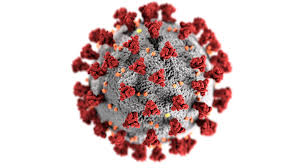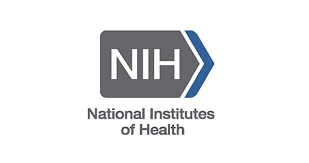Developed by Shray Alag, The Harker School
Sections: Correlations,
Clinical Trials, and HPO
Navigate: Clinical Trials and HPO
| Name (Synonyms) | Correlation | |
|---|---|---|
| drug1169 | Data registry Wiki | 0.58 |
| drug3685 | Spectrila® Wiki | 0.58 |
| drug2049 | Ixazomib Wiki | 0.41 |
| Name (Synonyms) | Correlation | |
|---|---|---|
| D007945 | Leukemia, Lymphoid NIH | 1.00 |
| D007938 | Leukemia, NIH | 0.71 |
| D054198 | Precursor Cell Lymphoblastic Leukemia-Lymphoma NIH | 0.67 |
| Name (Synonyms) | Correlation | |
|---|---|---|
| HP:0005550 | Chronic lymphatic leukemia HPO | 0.58 |
| HP:0002665 | Lymphoma HPO | 0.47 |
| HP:0001909 | Leukemia HPO | 0.46 |
Navigate: Correlations HPO
There are 3 clinical trials
This is a non-controlled, single-arm, open-label clinical trial to describe the PK, PD, immunogenicity and safety of ASNase. All subjects enrolled will receive the IP recombinant ASNase (Spectrila®). Since Spectrila is already approved in the European Economic Area for first-line treatment of ALL patients of all age groups and showed similar efficacy and safety in comparison to Asparaginase medac no blinding or control groups are necessary. As underlying treatment protocol the BRALL 2014 treatment protocol will be used.
Description: Assessment of induction phase response, defined as subjects with asparaginase (ASNase) activity trough levels in serum ≥ 100 U/L in induction phase
Measure: Asparaginase (ASNase) activity trough levels Time: Day 21 until Day 31The purpose of this study is to determine the maximum tolerated dose (MTD) and/or recommended phase 2 dose (RP2D), safety and toxicity, and pharmacokinetics (PK) of ixazomib administered intravenously in combination with multiagent reinduction chemotherapy in pediatric participants with relapsed/refractory ALL or LLy.
Description: DLT: Grade 4 nonhematologic toxicity after first dose of ixazomib and is probably/definitely attributable to the ixazomib treatment regimen, with exceptions, example fever/infection with/without hospitalization, fatigue and gastrointestinal symptoms, hypofibrinogenemia, metabolic/laboratory abnormalities that resolve to less than or equal to(<=)Grade 2 within 7 days. Any Grade 3/4 nonhematologic toxicity after first dose of ixazomib that is possibly/probably/definitely attributable to the ixazomib treatment regimen and results in omission of subsequent dose of chemotherapy, with exception of fever/infection. Hematologic toxicities: Failure to recover a peripheral absolute neutrophil count (ANC) ≥0.5*10^9 per liter (/L) and a platelet count ≥50*10^9/L due to documented bone marrow hypoplasia (cellularity <10 20%) within 42 days after the beginning of systemic chemotherapy without evidence of active disease by bone marrow evaluation or active infection.
Measure: Number of Participants with Dose-limiting Toxicities (DLT) During Reinduction Chemotherapy Time: Up to Day 29Description: ORR is defined as the percentage of participants with complete response (CR) or CR with incomplete platelet recovery (CRp) based on Response Evaluation Criteria in Solid Tumors (RECIST) version 1.1. CR is defined as bone marrow with less than 5 percent (%) blast by morphology, no evidence of circulating blasts or extramedullary disease, and recovery of peripheral counts (ANC >=1.0*10^9/L and a platelet count >=100*10^9/L). CRp is defined as bone marrow with <5% blasts by morphology, no evidence of circulating blasts or extramedullary disease, and recovery of ANC (>1000/mcL) but insufficient recovery of platelets (counts <100, 000/mcL).
Measure: Overall Response Rate (ORR) Time: Up to 30 monthsThe COVID-19 epidemic (Coronavirus Disease 2019) which is currently raging in France is an emerging infectious disease linked to a virus of the genus coronavirus (SARS-CoV-2). The first cases were reported in Wuhan, China, in late December 2019 [1]. Globally, it has been placed in the "pandemic" stage by the WHO since March 11, 2020. Coronavirus viruses have been responsible for epidemics in the past such as the SARS epidemic in 2002 (Syndrome Severe Acute Respiratory) linked to the SARS-CoV virus, or the epidemic of MERS (Middle East Respiratory Syndrome) that affected the Middle East in 2012. Patients with chronic lymphocytic leukemia (CLL) / lymphocytic lymphoma or Waldenstrom Disease (WD) therefore represent a population at high risk of developing a severe form in the event of COVID-19 infection. To date, no data is available in the literature to assess the impact of the COVID-19 epidemic in this population of patients with CLL / lymphocytic lymphoma or WD.
Description: Hematological pathology Description
Measure: Prognostic factors for healing of COVID-19 infection Time: Day 0Description: Describe the management carried out concerning Coronavirus infection and its impact on the treatment of hemopathy.
Measure: Medical care of Coronavirus infection Time: within 12 months after diagnosisDescription: Allow national epidemiological monitoring and regularly inform the hematology community.
Measure: national epidemiological monitoring Time: through study completion, an average of 2 yearsAlphabetical listing of all HPO terms. Navigate: Correlations Clinical Trials





Data processed on September 26, 2020.
An HTML report was created for each of the unique drugs, MeSH, and HPO terms associated with COVID-19 clinical trials. Each report contains a list of either the drug, the MeSH terms, or the HPO terms. All of the terms in a category are displayed on the left-hand side of the report to enable easy navigation, and the reports contain a list of correlated drugs, MeSH, and HPO terms. Further, all reports contain the details of the clinical trials in which the term is referenced. Every clinical trial report shows the mapped HPO and MeSH terms, which are also hyperlinked. Related HPO terms, with their associated genes, protein mutations, and SNPs are also referenced in the report.
Drug Reports MeSH Reports HPO Reports